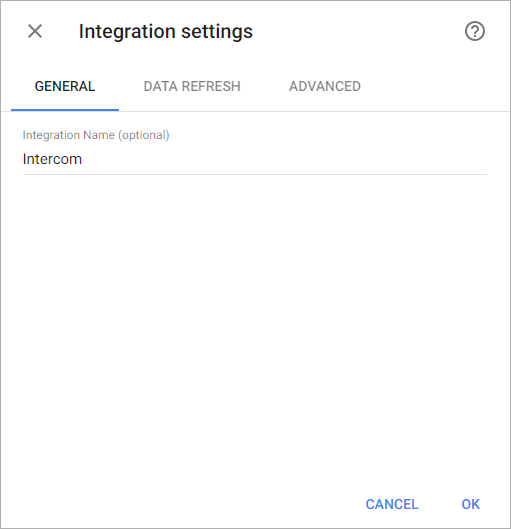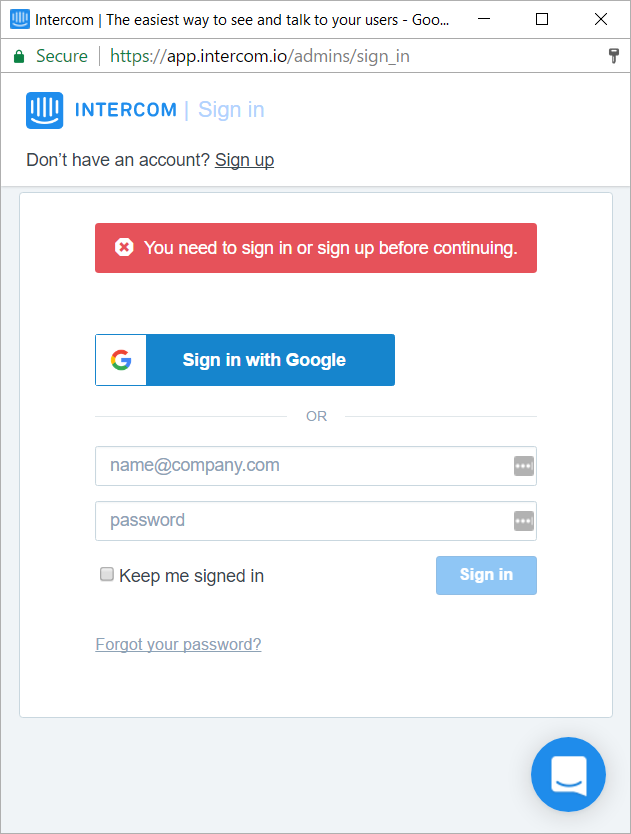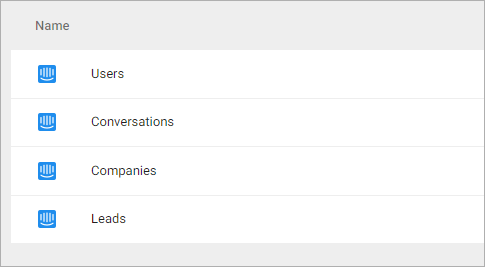Intercom is a fundamentally new way for internet businesses to communicate with customers, personally, at scale. It’s a customer communication platform with a suite of integrated products for every team—including sales, marketing, product, and support. Intercom’s products enable targeted communication with customers on your website, inside your web and mobile apps, and by email.
From this article you can learn:
- How to integrate your Intercom account with Slemma
- How to get data from Intercom
- How to create a chart on the Intercom integration
Creating an Integration
From your Slemma account, head over to the Library page and click the plus button at the bottom right. Select Integration from the submenu.
In the following page, you can find Intercom with one of the following ways:
- Scroll down and select Intercom from the list of Integrations.
- Use search to find Intercom from the list of Integrations.
- Choose Intercom using All dropdown list > Customer Success.
You’ll see the Integration settings dialog window. You can select the frequency for the automatic updates on the DATA REFRESH tab, or set weeks settings on the ADVANCED tab. Click OK.

Log into your Intercom account.

After authorization, grant Slemma permissions to access your data and click Connect.
After that, the integration will be created and it will appear in your account in the list of objects. Now you are able to share the integration with either individuals or the entire Team, rename or remove the integration. To view the options available for the integration, right click it in the list.
Creating a Dataset
A dataset is a collection of data in a tabular format that is created on one of the possible data sources. The datasets can be used to create dashboards or individual charts.
To create a dataset, click your Intercom integration in the list and select Browse datasets. From the following page, select which data you want to add to use in your charts.

NOTE: Cloud Service Integrations have prebuilt datasets that are not editable.
Click dataset’s name for a description of each dataset.
This data source contains information about all your users such as user count by location, and your custom fields per user. Dimensions + Custom Dimensions – Your custom fields (not numeric) Measures + Custom Measures – Your custom fields (numeric) Templates This data source contains information about all your conversations such as conversation count by status (open or closed) and number of the unique assignee. Dimensions Measures Templates This data source contains information about all your leads such as lead count by location, and your custom fields per lead. Dimensions + Custom Dimensions – Your custom fields (not numeric) Measures + Custom Measures – Your custom fields (numeric) Templates This data source contains information about all your companies. Companies allow you to represent commercial organizations using your product. Dimensions Custom Dimensions – Your custom fields (not numeric) Measures Custom Measures – Your custom fields (numeric)
Creating a Chart
Click a dataset or integration and select Create dashboard/Create saved chart/Create presentation to start building a chart (please note that presentations are available starting from the Standard Plan).
From the next page, you can choose to create your own chart from scratch, or you can apply one of the templates we created.
- If you choose to build a new chart from scratch (“Blank” option), the Chart designer will open. Go here to learn how to create a chart in the Chart designer.
- If you choose a template, a new chart will be added to a dashboard/saved chart/presentation (depending on the way you start the chart creation).

